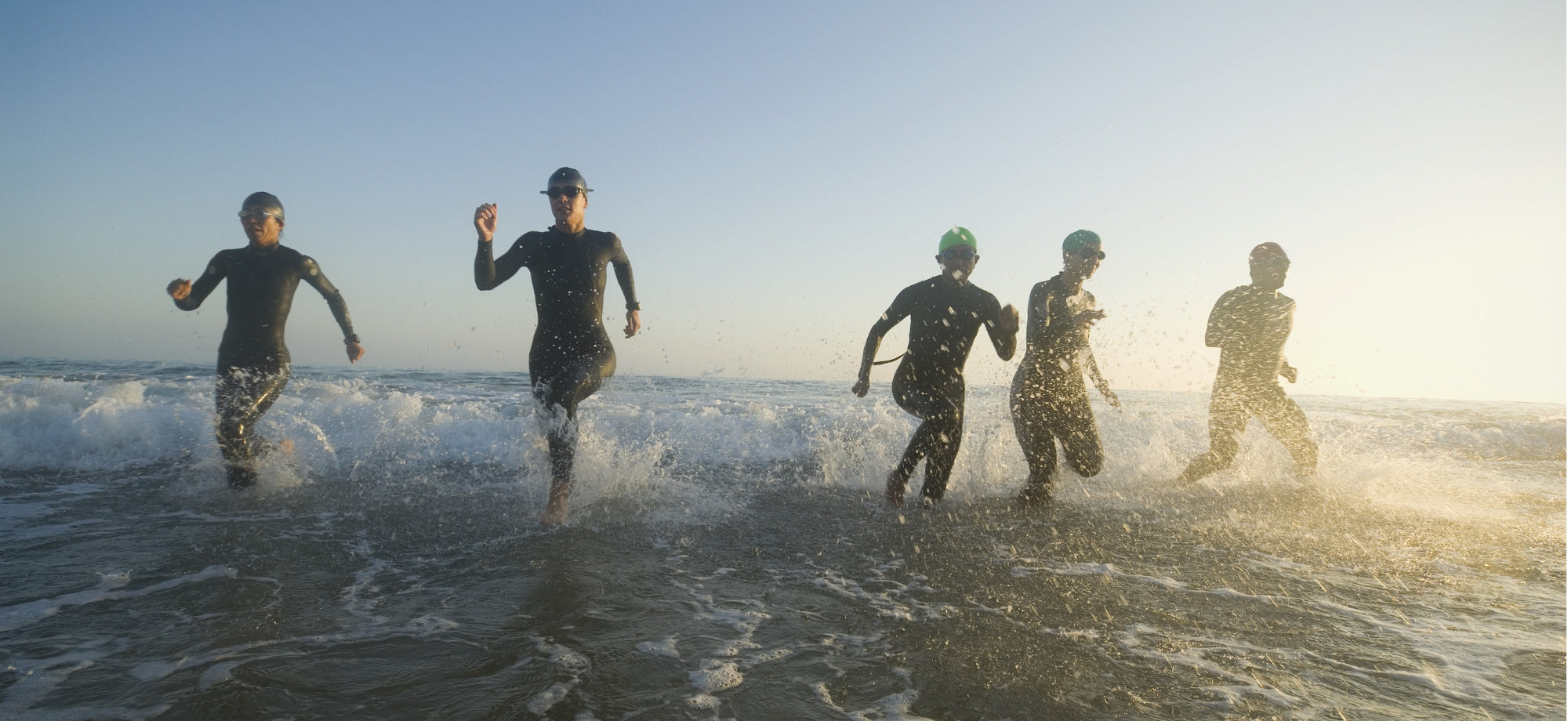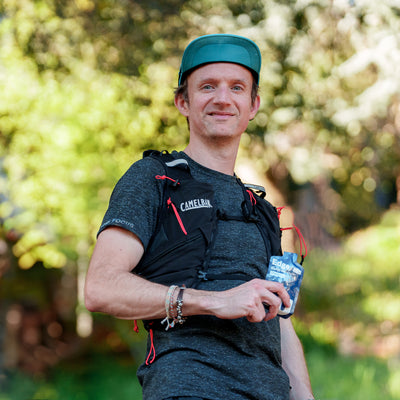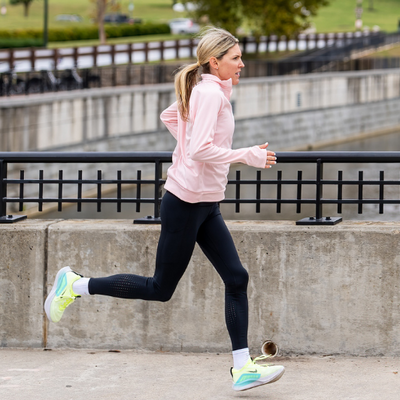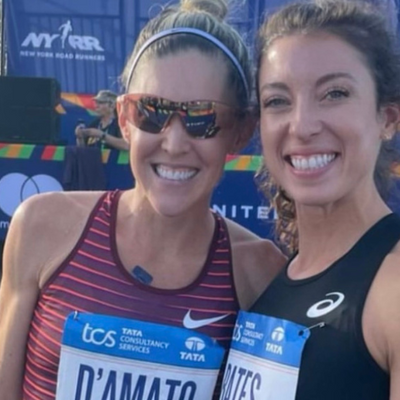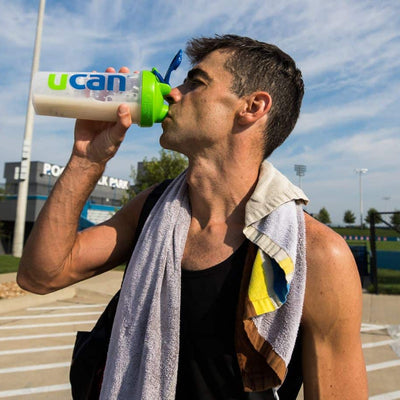The Challenges of Fueling for Triathlon
It is no secret that finding a triathlon nutrition plan that is right for you can be a challenge. Bob Seebohar, sports dietitian at eNRG Performance and former U.S. Olympic Team dietitian, works with age-group and elite athletes. He says the top three reasons triathletes want to work with him are to:- eliminate GI distress
- minimize energy swings
- improve body composition
The UCAN Difference
While minimizing sugar in training has benefits, you still need to fuel your body with carbohydrates, the primary source of energy for your muscles and brain during exercise. But not all carbs are created equal. Complex carbs are the fuel of choice for sustained energy, but many foods with complex carbs are heavy on the stomach, especially during exercise. Most traditional sports nutrition products contain simple carbs, which provide quick energy followed by a crash. Triathletes in search of a consistent, healthy energy source for training that also sits well in the stomach are drawn to UCAN products because they have steady-release carbs for long-lasting energy. UCAN energy foods are powered by LIVSTEADY, a patented, low glycemic carbohydrate derived from non-GMO starch that delivers energy in a different manner compared to sugar-based fuel sources. Thousands of triathletes across all age groups and experience levels have reported that they feel better throughout their workouts, don’t need to fuel as frequently, and experience minimal GI distress when implementing UCAN into their training. “A lot of recreational triathletes need to know that we're also focusing on health,” says Seebohar. “If you're not healthy you can't perform and if you're using gels or products with sugar every single day in training, that's so much added sugars that can actually have a really negative effect on some health parameters. LIVSTEADY is completely revolutionizing how athletes, coaches, and dietitians think about fueling the body.” Since UCAN products are unique, here are some tips to guide you as you practice your fueling strategy in training.

Fueling for Triathlon Training with UCAN
When it comes to fueling your training, you need to be dialed in with what you’re eating and drinking pre, during and post-workout to get the most out of every session and recover quickly for the next one. Many athletes are busy with work and have limited time to train. You don’t want to waste a workout because you aren’t properly fueled. UCAN products can be incorporated throughout all aspects of your training to keep your energy steady throughout your workout and beyond. Pre-workout: Whether it’s a morning swim or a 4-hour brick workout, the goal of fueling for every training session is to keep blood sugar stable. This allows you to put in consistent work without any physical or mental disruptions. UCAN is the ideal way to fuel up before a workout of any duration because it's easy on the stomach and doesn't spike blood sugar, so you’ll feel good throughout your workout and won’t crash after. Here are some tips on fueling before a workout:- Whether it’s a swim, bike or run, UCAN Energy Powder or Edge is the perfect stomach-friendly fuel to have 30 minutes prior to training
- 1 serving of Energy Powder has 20g of LIVSTEADY carbs and delivers ~1 hour of steady energy; 1 serving of Edge has 15g LIVSTEADY and delivers 45-60 minutes of steady energy.
- Load up with multiple servings of UCAN pre-workout if you’re training for over 90 minutes and want a longer burn of energy.
- For longer workouts, a UCAN Energy Bar or Energy + Protein 90 minutes before your workout can serve as a light breakfast, followed by Edge or Energy Powder closer to your workout
- Since UCAN products won’t spike your blood sugar and digest easily, you can consume multiple servings in different formats in the hours leading up to your workout to stabilize energy levels
Dialing in your triathlon nutrition plan is vital for success. Triathletes and coaches often refer to nutrition as the “fourth discipline” of triathlon. You must have a strong foundation in cycling, swimming, running, and nutrition to have great races. We have compiled our best advice, with tips from top athletes and experts in the sport, to help you find a good system to fuel your training and races.
During Workout: Every athlete burns a different amount of calories due to their size and energy output during a workout. It’s important to remember you don’t need to replenish what you burn during exercise. The goal is to fuel in a way that keeps your blood sugar stable, the key to feeling steady energy during exercise. Seebohar says that, “we have research that says we should consume between 120 and 360 calories an hour, or 30 to 90 grams of carbohydrates per hour during exercise, however, it is very specific to each individual. When working with athletes I recommend starting on the low to moderate side just to be careful, and then increasing or decreasing calorie intake based on your performance.” Because UCAN’s LIVSTEADY does not dump a bunch of carbs into your bloodstream all at once like other sports nutrition options, the calories are more evenly distributed and you don’t need to fuel as frequently or consume as many calories per hour. Traditional sports nutrition with simple sugars (dextrose, fructose, sucrose) or other fast-carbs like maltodextrin require frequent feedings in order to sustain blood sugar. Recreational triathletes fueling with UCAN typically use between 70-160 calories per hour to fuel a long effort, while elite athletes training at a higher intensity tend to use more. Here are some tips on fueling with UCAN during a workout:
- Consume 1-2 servings Energy Powder/Edge every hour during exercise; adjust up or down based on your needs
- When fueling with the Energy Powder, try taking big gulps at once and consuming a substantial amount each time. UCAN works best when you consume an entire serving over a short period of time and allow it to steadily release into your body.
- The starch-based carbs in UCAN digest easily and can be mixed concentrated with just 4-6 ounces water per serving; mix multiple servings in a single bottle and keep your hydration separate
- The Energy Powder will settle in your bike bottle over the course of several hours. Try using the metal ball from a Blender Bottle or something else to break up the powder in your bottle. Shake before drinking each time and the powder will mix back up.
- During longer workouts on the bike, an Energy Bar is a great way to curb hunger in between servings of Energy Powder/Edge and won’t sit heavy in your stomach.
- Try to minimize the amount of sugar or simple carbs you consume along with UCAN, but having small amounts of sugar during exercise in conjunction with UCAN will not negate the impact
Post-Workout: Refueling with Energy + Protein after a tough session helps your muscles recover while giving you a consistent release of energy so you don’t crash. “It’s a slower energy burn so that's going to keep you satiated longer, for at least a couple hours,” says Seebohar. For athletes with body composition goals, a recovery drink with steady-release carbs instead of sugar will keep the body in fat-burning mode for longer post workout. If you’re training multiple times in a day, UCAN between workouts lays the foundation for your energy as you head into the next session.
Hydration and Electrolytes
Water is not always enough to keep your body functioning properly during exercise, especially as we sweat in the warmer months. The balance of electrolytes and water keeps you hydrated throughout your training and races. Electrolytes are essential minerals necessary to keep your body operating properly, such as:- Controlling nerve function and muscle movement
- Regulating blood pressure
- Balancing your pH levels
UCAN Hydrate is a naturally sweetened electrolyte mix, but it is completely sugar-free unlike many sports drinks on the market, so it’s easy on the stomach and won’t spike your blood sugar. Hydrate has 5 of the major electrolytes vital to athletic performance and replaces the electrolytes triathletes often lose through sweat, which is the best way to optimize dehydration recovery. During training, consume 1 serving every 1-2 hours based on your individual sweat rate and hydration needs. Adjust up based on the heat and humidity where you’re training. Mix Hydrate in with your Energy Powder to give your fuel an electrolyte boost.
Sample Ironman Race Nutrition Plan
There are many different lengths of triathlons, from sprint to Olympic to a full Ironman distance, so your fueling needs will vary depending on how long you are exerting yourself. For longer distances, you should prepare to bring plenty of fuel with you on the bike and run. Here’s a sample Ironman Nutrition Plan for age-group athletes:
BEFORE:
- Option 1: Eat a balanced breakfast 2-3 hours prior to your race start; consume 1-2 servings of Energy Powder 30-45 minutes before the swim start.
- Option 2: Consume 1 serving of Energy + Protein 90 minutes before the race start; consume 1-2 Edge energy gels 15-30 minutes before the swim start.
- BIKE: Consume 1-2 servings of Energy Powder beginning at 15 minutes on the bike and consume an additional serving or an Edge gel every 45-60 minutes after that. Try to time your final serving as close to the end of the bike as possible. Consume 1 serving of Hydrate every 1-2 hours. You can mix it in with your Energy Powder or consume separately.
- RUN: Consume Edge every 45-60 minutes during the run. Switch to simple carbs late in the race if you need a mental boost
- Enjoy 1 serving Energy + Protein in the first 30-60 minutes to kick start recovery and prevent a blood sugar crash.

